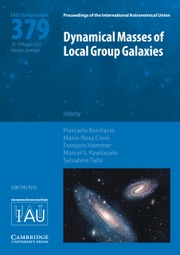No CrossRef data available.
Article contents
Supernovae at the Extremes
Published online by Cambridge University Press: 27 October 2016
Abstract
Core share and HTML view are not available for this content. However, as you have access to this content, a full PDF is available via the ‘Save PDF’ action button.
During a supernova explosion, fluid instabilities are generated because the star is in a hydrodynamically unstable situation, which is like the effects of stirring a fire or blowing air into a hot grill. The resulting mixing of the supernova ejecta may be observable. Here, we briefly discuss the multidimensional simulations of supernovae from very massive stars.
Information
- Type
- Contributed Papers
- Information
- Proceedings of the International Astronomical Union , Volume 11 , General Assembly A29B: Astronomy in Focus , August 2015 , pp. 218 - 219
- Copyright
- Copyright © International Astronomical Union 2016
References
Chen, K.-J., Woosley, S., Heger, A., Almgren, A., & Whalen, D. J.
2014a, ApJ, 792, 28
Google Scholar
Chen, K.-J., Heger, A., Woosley, S., Almgren, A., & Whalen, D. J.
2014b, ApJ, 792, 44
Google Scholar

